Selling to France: The 3rd Largest Market in Europe
France is the third largest ecommerce market in the EU and 6th in the world. Sales potential is definitely there, especially considering the turnover of over 65 billion euros. This is all great news for international sellers interested in international growth opportunities
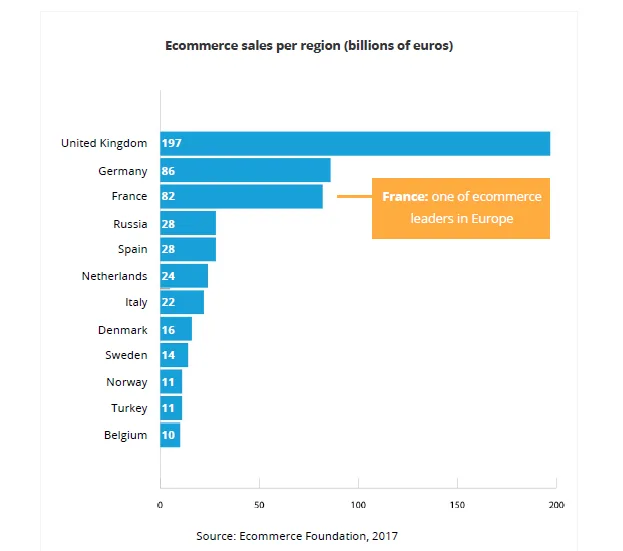
Main characteristics of the French marketplace and consumers
In general, the French marketplace can be characterized by high Internet penetration, growing mobile services and a modern delivery structure. The market is relatively mature, but still full of opportunities for online sellers.
Among other things, it can boast:
large and diverse consumer base,
high purchasing power,
reliable payment methods,
great location,
widespread use of the French language.
At the moment French ecommerce mostly consists of either large retailers or small merchants, which contrasts with the UK or Germany where mid-sized sellers are more common.
Online sales are rising quickly in France, but physical stores still play an important role in retail. Thus, many online retailers have physical shops, which is helping them develop multi-channel strategies.
French ecommerce market in numbers
55.43 million – Active Internet users
84% – Internet penetration
80% – Population shopping online
52% – Proportion of shopping online from abroad
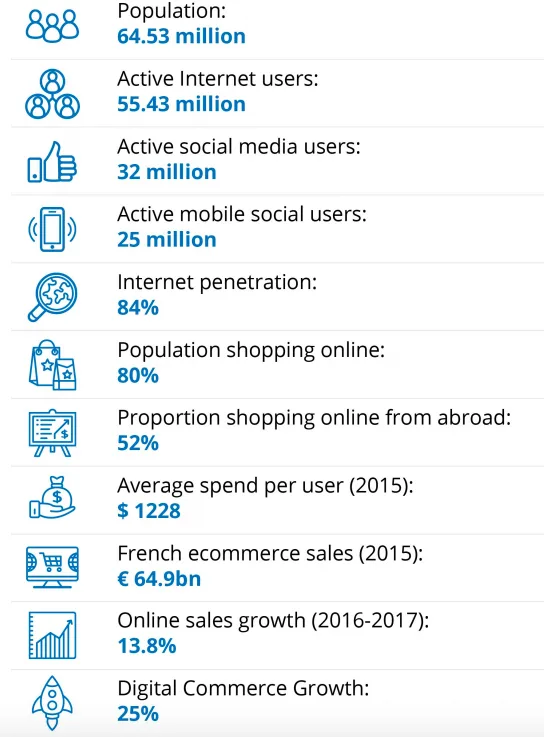
Online buying behavior
Two-thirds of the French population shopped online in the last 12 months (as of 2016). Surprisingly, according to one study, most aren’t millennials. The age of a typical ecommerce shopper in France is 35 to 49, followed by 25- to 34-year-olds.
French online buyers are usually tech savvy and confident in online shopping. As customers, they appreciate respect, politeness, clear information and prompt delivery of service.
80% of French consumers compare prices before buying non-grocery products. If you’re an international online merchant who wants to sell in France, it’s important that you translate and localize your online store. It’s also important to interact with French-speaking consumers in their native language.
Among other things, overcoming the language barrier will definitely make the purchasing process more straightforward for French-speaking consumers.
The French language, the sixth most widely spoken language in the world, is used not only in France but on five continents. This can provide international online sellers with extra opportunities, e.g. the possibility to reach millions of consumers in Belgium, Switzerland, Canada, and in Francophone Africa.
Popular product categories
Among the top products purchased by French online buyers are clothing/footwear, books, home electronics, cosmetics, hair care, and skincare, and children’s items.
And what do the French like to purchase from abroad?
Vehicle Parts and Accessories
Clothes, Shoes, Accessories
Home and Garden
Computers, Tablets, and Networking
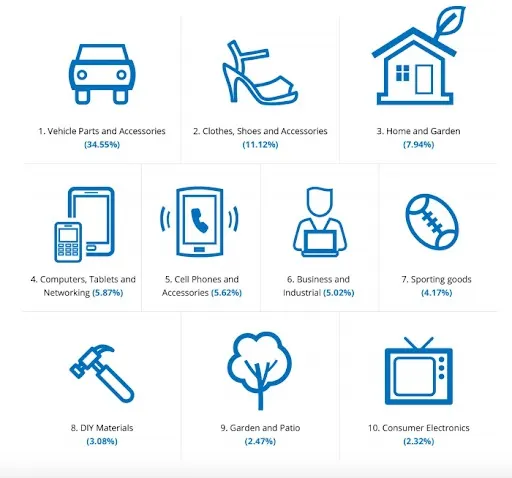
Logistics, delivery, and shipping
New logistics approaches, including free delivery and returns, unlimited delivery subscriptions, or pick-up lockers all contribute to ecommerce growth in France. This is encouraging for cross-border retailers thinking of entering the French market.
However, the French are demanding when it comes to delivery and they expect it to be of the utmost convenience. Thus, retailers should prioritize consumer convenience when providing delivery options. Offering a choice is crucial here, along with reliability and speed.
The preferred delivery method is home delivery (83%), followed by shipping to a pick-up & go location (66%) and delivery in store (26%).
La Poste, Collissimo and Chronopost are recognized and trusted brands in France so it’s recommended to provide French consumers with these delivery options on your website. This way, they’re more likely to put trust in your business.
According to the UK’s Royal Mail’s research, reassurance about delivery, tracking goods and receiving all the relevant information is very important in France. 87% of French would be happy to track every order.
Payment methods preferred by the French consumers
In France, credit and debit cards (57%) are the most popular payment method for online purchases. They’re followed by PayPal (25%) and bank transfer (9%).
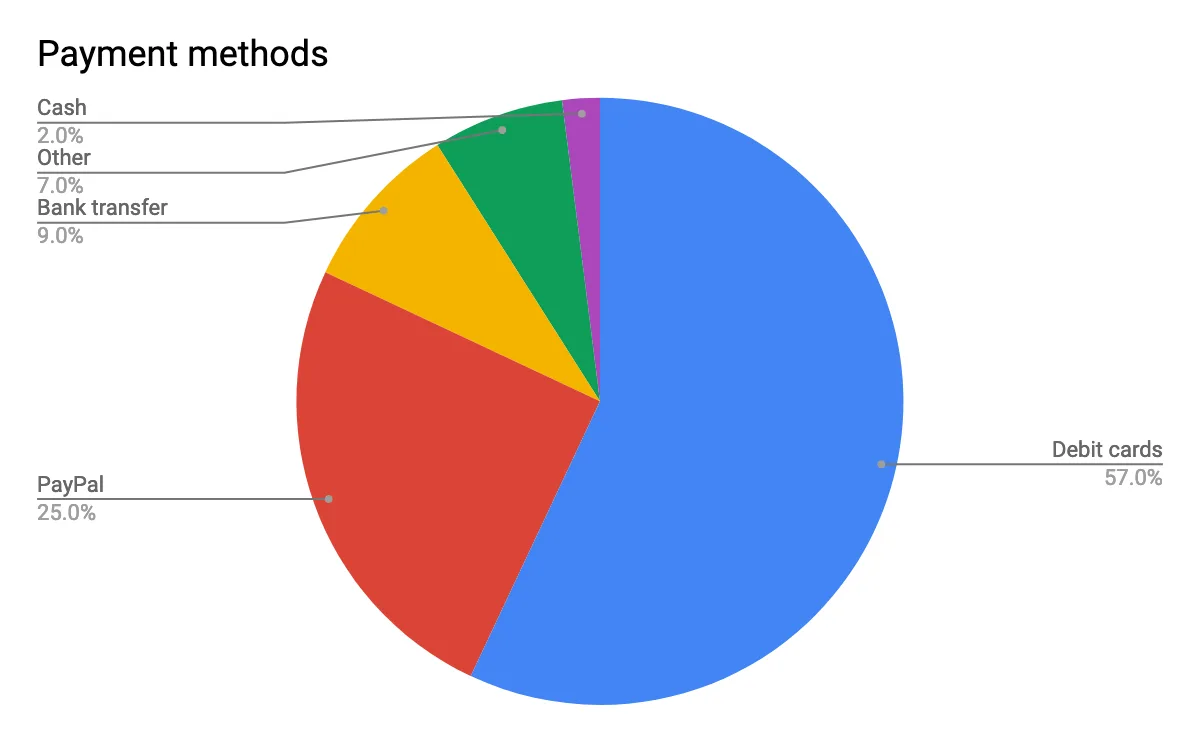
Over 50% of all online customers in France use Cartes Bancaires (payment cards). Thus, if you want to sell in France and maximize your conversion rates at the checkout, include Cartes Bancaires along with other popular payment cards, such as Visa, Mastercard or American Express.
Mobile ecommerce
The mobile share of retail ecommerce sales in France amounts to 28%, which is relatively low compared to the leader, i.e. the UK (52%).
It may seem surprising that although France is the third ecommerce market in Europe, it ranks in sixth place when it comes to shopping on mobile. This doesn’t mean, however, that online sellers can cut corners when it comes to mobile optimization. Overall trends indicates a significant increase in the use of mobiles for shopping purposes. Thus, retailers must make shopping smart on mobile devices if they don’t want to lose a big proportion of potential buyers.
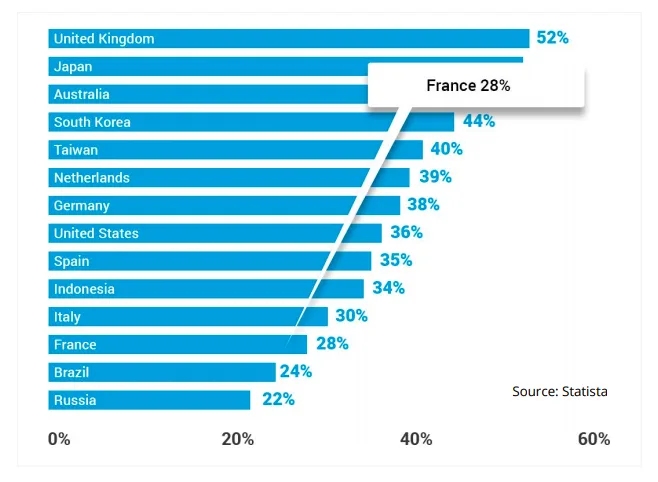
Cross-border shopping
52% of French online shoppers order products from abroad. Favorite online shopping destinations of French online buyers include the UK, China, and Germany.
France is conveniently located in Europe and it’s also situated between North America and Asia. This strategic position makes it a very attractive destination for online sellers.
Benefits and challenges of selling to France
Benefits
First, the French language is spoken all over the world. This gives you an opportunity to access online buyers located in many countries beyond France and continents beyond Europe.
Second, France is Europe’s third market in value, just behind the UK and Germany. With a turnover of more than 65 billion euros, France has a strong online retail position.
The growing popularity of ecommerce is opening the country up to more competition, increasing opportunities for international retailers.
Third, there are a large variety of marketplaces in France, e.g. Cdiscount, RueDuCommerce (Carrefour), fnac.fr, Spartoo (shoes), PriceMinister (Rakuten) and many more. These marketplaces are a good way to promote your products at a relatively low marketing cost. There’s also a wide range of products that can be offered to French shoppers, e.g. in fashion, furniture, travel, electronics or high-tech categories.
Fourth, France’s location is beneficial with regard to (international) trade. It’s located in the heart of Europe and is also a natural crossroads for European and global trade.
Further, well-developed transport and technology infrastructure should make your online sales experience a smooth process. France has one of the best designed and most efficient transport networks in the world. In addition to the advanced train infrastructure, there are also roads, motorways, and waterways, which facilitate domestic and international trade.
To add to this, French consumers are becoming increasingly connected. Mobile commerce sales have recently increased by 30%, so tap into this growing sales potential.

Challenges
Some French consumers would like to see a personalized interface and enjoy a personalized user experience. This can be one of the main challenges for online retailers. The main issues around a lack of time and skills can be remedied by automated solutions.
Further, the three buying criteria (delivery, price, and product) that French consumers see as the most important can make it challenging for retailers to provide the impeccable buying experience many French customers expect.
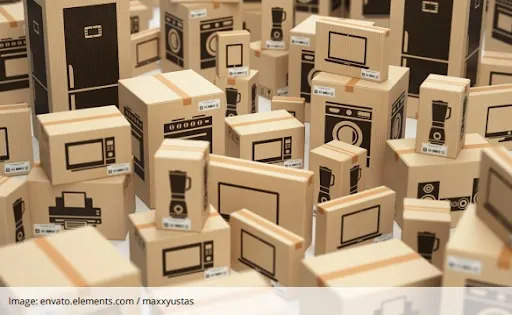
Additionally, it’s crucial to meet the delivery expectations of those French online buyers who expect utmost convenience, speed, reliability and regular reassurance about the whereabouts of their parcels. Due to differing customer expectations, you’ll probably be required to offer multiple delivery options.
Summary
The online sales landscape in France has a lot of things in common with other European markets, so if you sell in Europe already, this should make things a whole lot easier. However, don’t overlook the many unique characteristics of the French marketplace, especially in terms of consumer demands, price competition and multi-channel retailing.

Karolina Kulach is a content marketer at Webinterpret and non-fiction writer, specializing in global ecommerce. Educated in Linguistics (MA) and Business Studies (BA Hons). A well-traveled individual with international education & work experience gained in London, Scotland, Poland and Germany. In her spare time buzzing with creative content ideas, including rhyming poems.


